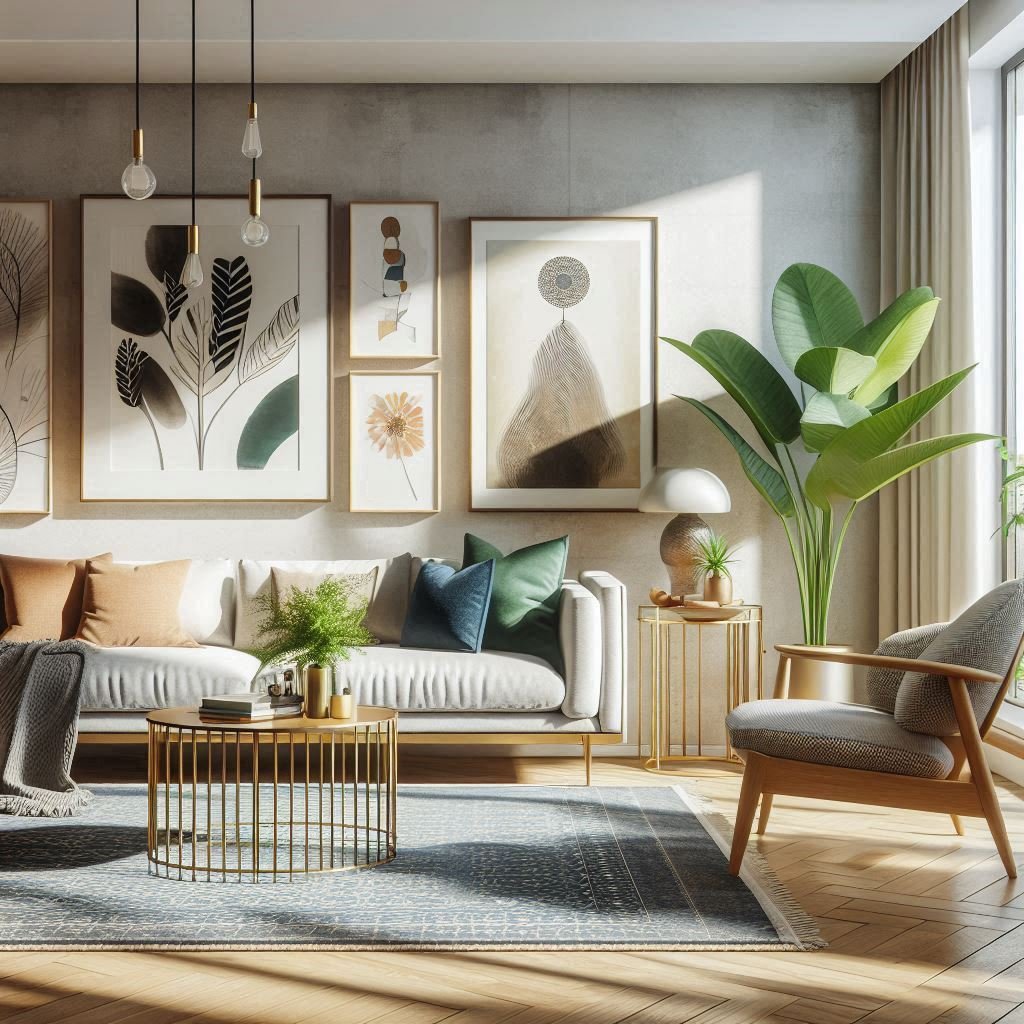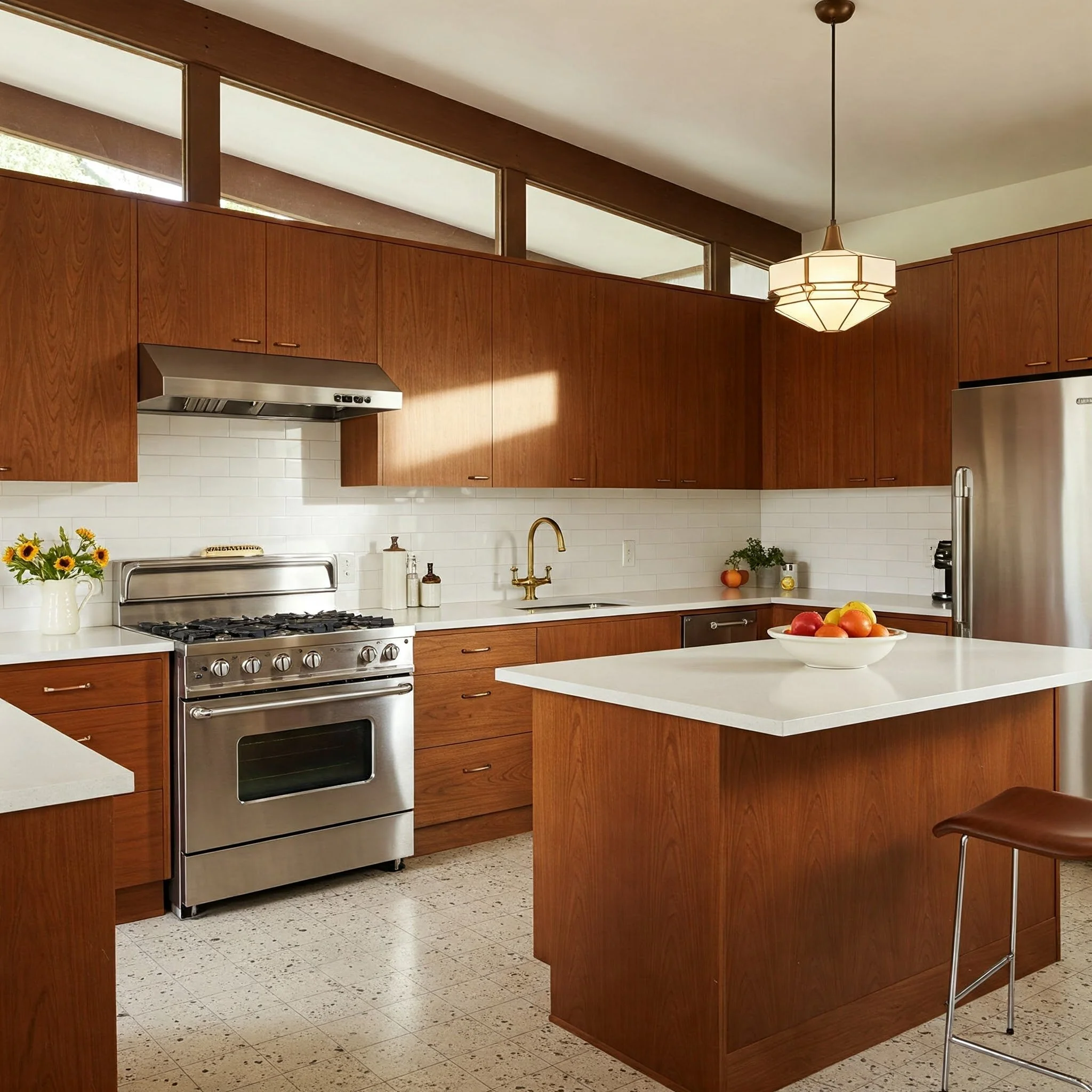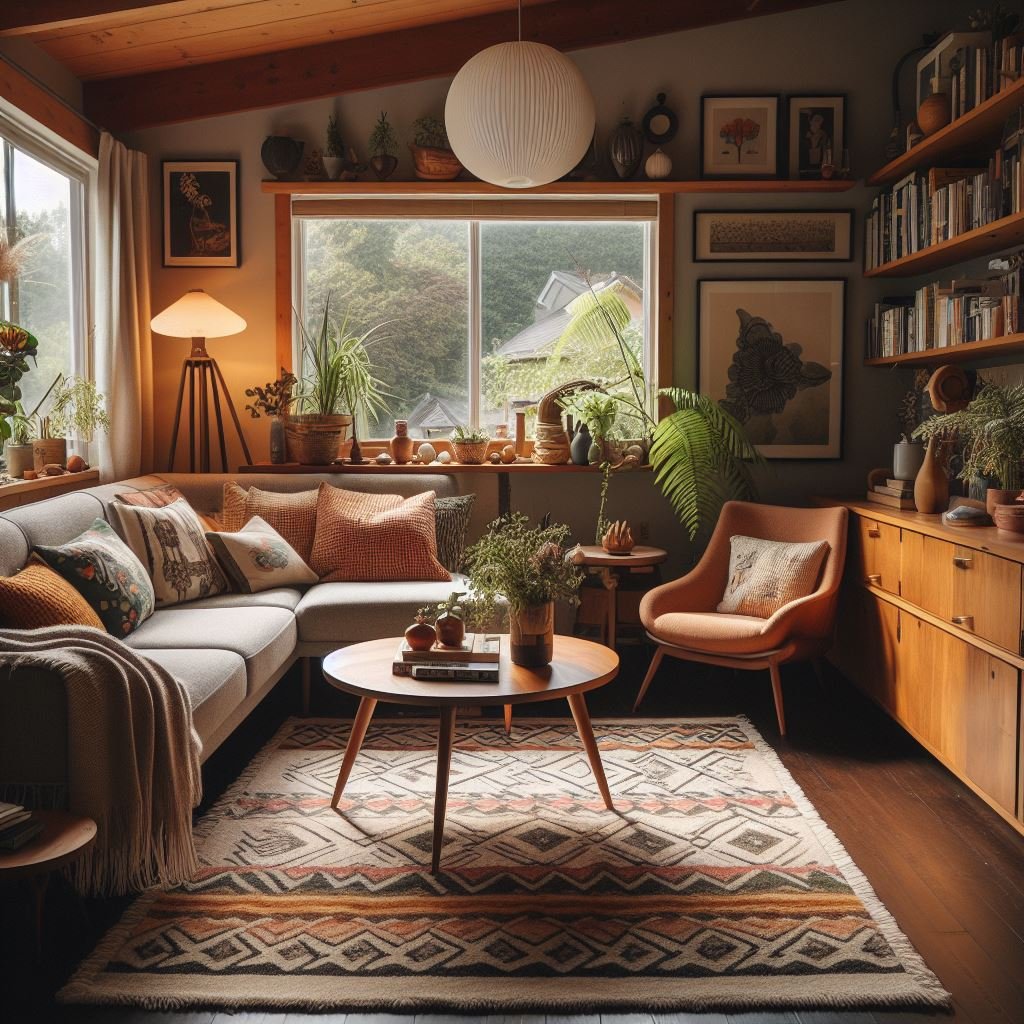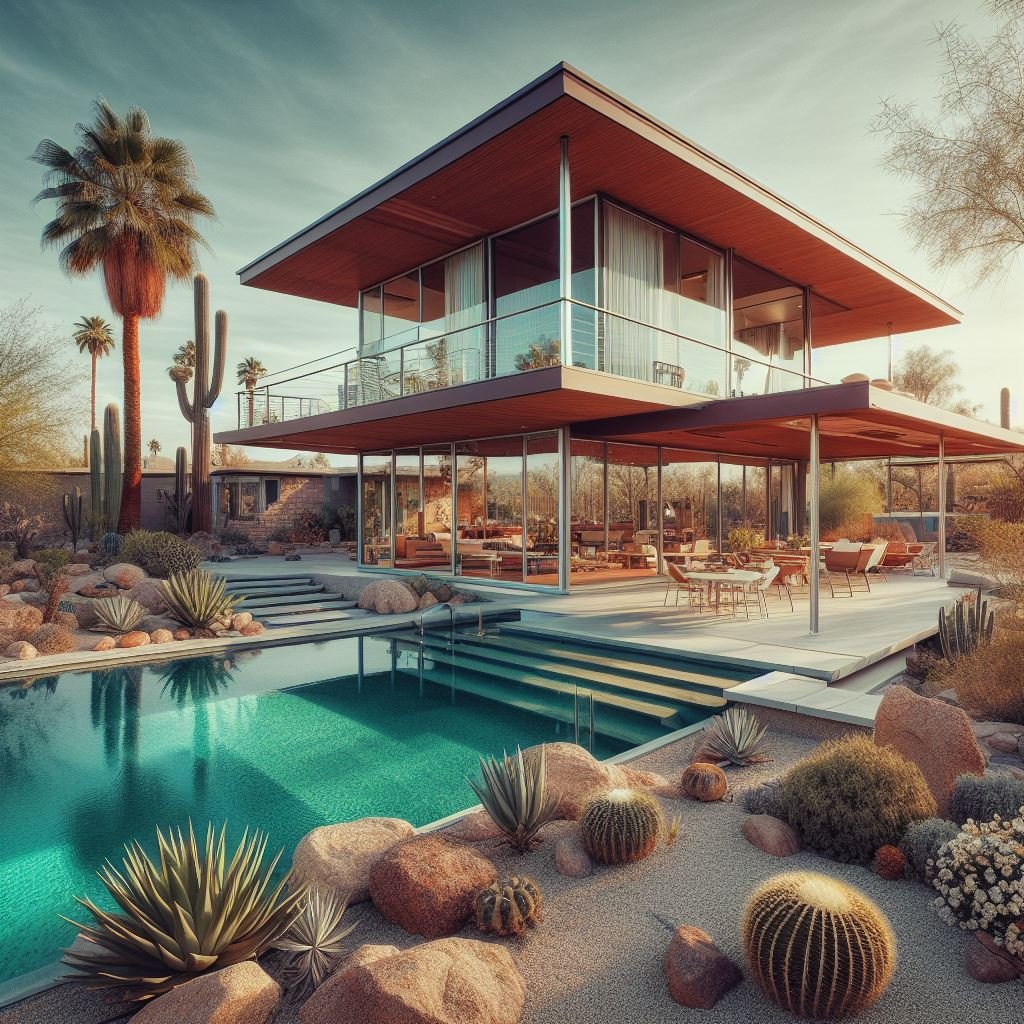How to Pull Off a Mid-Century Modern Design for Your Home
Achieve the perfect mid-century modern design for your home with these expert tips. Blend vintage charm and modern elegance effortlessly.
Mid-century modern design remains one of the most enduring styles in interior decor, blending functionality with timeless aesthetics. Known for its clean lines, organic forms, and an emphasis on natural materials, this design movement that began in the mid-20th century has found its way into modern homes across the globe.
If you want your space to feel effortlessly stylish and livable, here's a guide to pulling off a mid-century modern design in your home.
1. Strive for Clean Lines and Simple Shapes
The hallmark of mid-century modern design is its uncluttered aesthetic. Think clean lines, geometric shapes, and minimal ornamentation. With these in mind, choose furniture with sleek profiles—like low-slung sofas and chairs with tapered legs—and keep surfaces free from unnecessary clutter. Balance is key, too, so mix softer curves with angular forms for a harmonious look.
2. Go Natural with Materials
Mid-century modern design heavily emphasises natural materials. Wood is often the star of the show, with rich, warm tones like teak, walnut, and oak taking centre stage. You can complement this with stone, as well as textiles like leather and wool. If you're updating your kitchen, consider wooden cabinetry paired with sleek quartz or marble countertops for a true mid-century modern vibe.
3. Play with Colour
Neutrals like white, beige, and grey are as flexible as colours can get, meaning you can pretty much do anything you want with them. That's why they form a strong foundation for mid-century modern design. That said, don't shy away from bold accents. Hues like mustard yellow, burnt orange, olive green, and teal can bring the design to life. You can integrate these colours through upholstery, rugs, or decor items to give a distinct contrast and a pop of personality to the neutral backdrop.
4. Invest in Iconic Furniture
The most outstanding aspect of mid-century modern design is the furniture. Think Noguchi coffee table, Eames lounge chair, or sleek sideboard with sliding doors. If the originals are out of reach of your budget, high-quality replicas or inspired pieces can help you nail the look.
5. Add Statement Pieces
Statement pieces are always a good way to draw attention to the room and they are particularly essential in mid-century modern design. To that end, consider adding contemporary art posters to your home design. The right piece not only complements the clean lines and vibrant colours of mid-century decor but also personalises your space.
For a curated selection of unique prints, explore works from emerging illustrators and graphic designers. Beyond being more budget friendly, it offers a fresh take on wall art to make your space less generic. If you choose well, your art print can start conversations without looking out of place in the mid-century aesthetic.
6. Embrace Open Spaces
An open floor layout has been popular for quite a while, and mid-century homes were among the first to make it so. Merging common areas into a continuous, flowing space seemed revolutionary, but it worked because it helped people socialise more easily.
If you're working with a smaller space, consider using furniture strategically to create zones while maintaining a sense of openness. Open shelves, rugs, and low partitions are perfect for this purpose, as they distinguish individual spaces but still keep the whole area open.
7. Lighting Matters
Mid-century lighting fixtures are sculptural works of art, so look for pieces with organic shapes, like the famous Sputnik chandelier or lamps with arched arms and metallic finishes. Also, layer floor, table, and ceiling lights to add warmth to your space.
8. Blend Indoor and Outdoor Spaces
Another feature of mid-century design is the seamless connection between the indoors and outdoors. Many homes in this aesthetic have large windows, sliding glass doors, and greenery that create an airy and light-filled atmosphere. Even in urban settings, adding indoor plants or small herb gardens can evoke this connection.
9. Accessorise Thoughtfully
Less is definitely more in mid-century modern accessories. Limit yourself to just a few quality decorative items, such as a sculptural vase, some nice ceramic bowls, or an interesting textured throw blanket. Find decor that echoes shapes and materials of your furniture so it all looks related and cohesive.
10. Incorporate Retro Textiles and Patterns
Textiles are vital in putting the mid-century modern look together. Opt for retro-inspired patterns such as geometric shapes, atomic designs, or abstract prints in bold colours to evoke the era's character.
Use these patterns on throw pillows, curtains, or even an accent chair. Balance is key, too—pair striking prints with solid-coloured pieces to prevent the space from feeling overwhelming.
11. Be Bold but Stay True to Your Style
While mid-century modern design provides a framework, be sure to add your own personal style to the space. Whether that is in the form of art, unique furniture choices, or sentimental decor, ensure the space feels like you. After all, the best designs are those that tell a story.
For a deeply personal touch, consider using retro patterns combined with a well-chosen art poster that brings that modern touch to the room. This element can tie it all together, bridging the mid-century feel of the nostalgia of the textiles with that modern, artistic vibe. Textile layering also adds depth, warmth, and that extra "wow" factor to your mid-century modern haven.
Why Mid-Century Modern Still Resonates
Mid-century modern design goes far beyond a trend—it is a timeless approach to making spaces that are beautiful and functional. Simplicity, using natural materials, and bringing the outdoors inside feel as relevant today as they did in the 1950s







